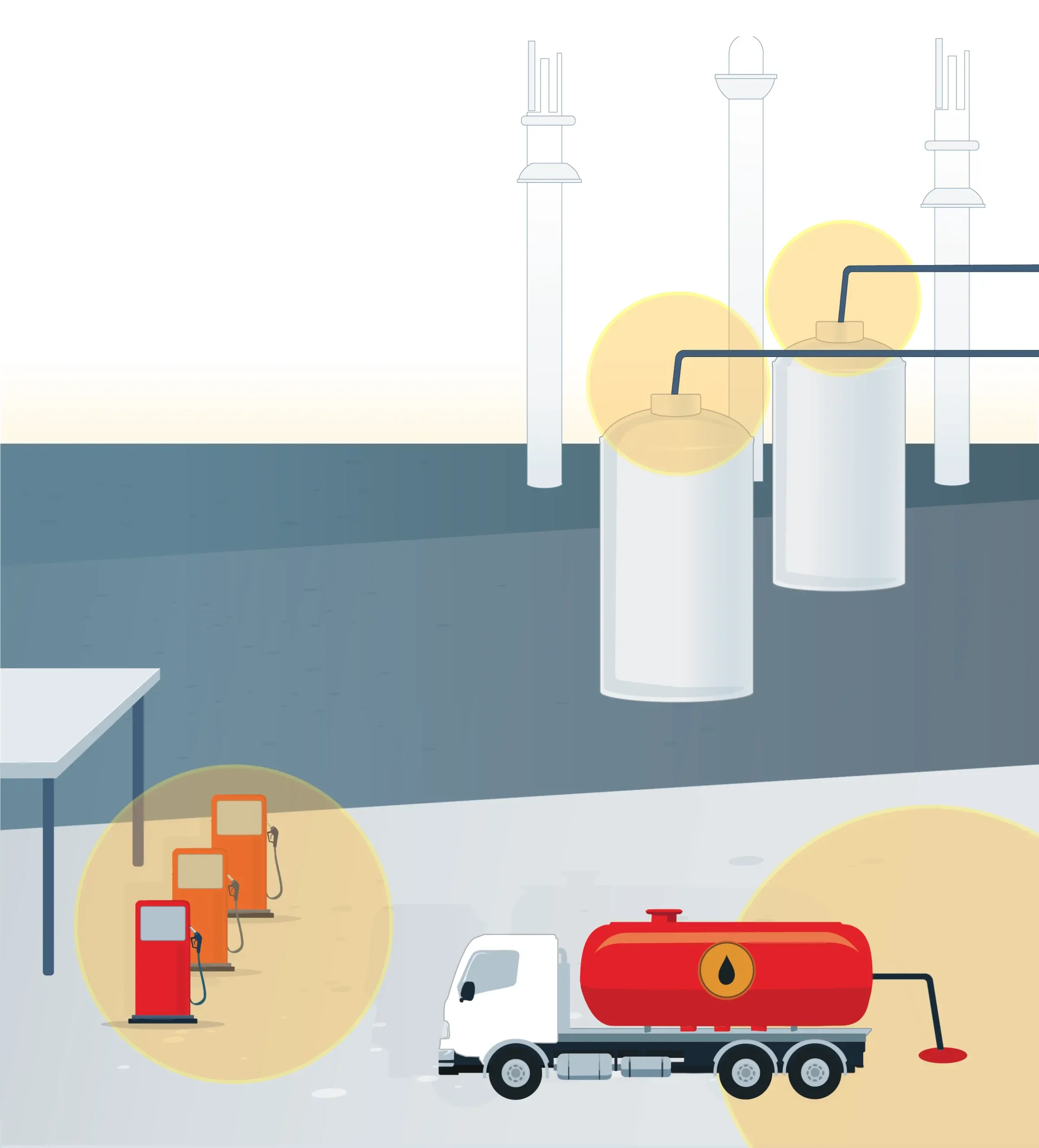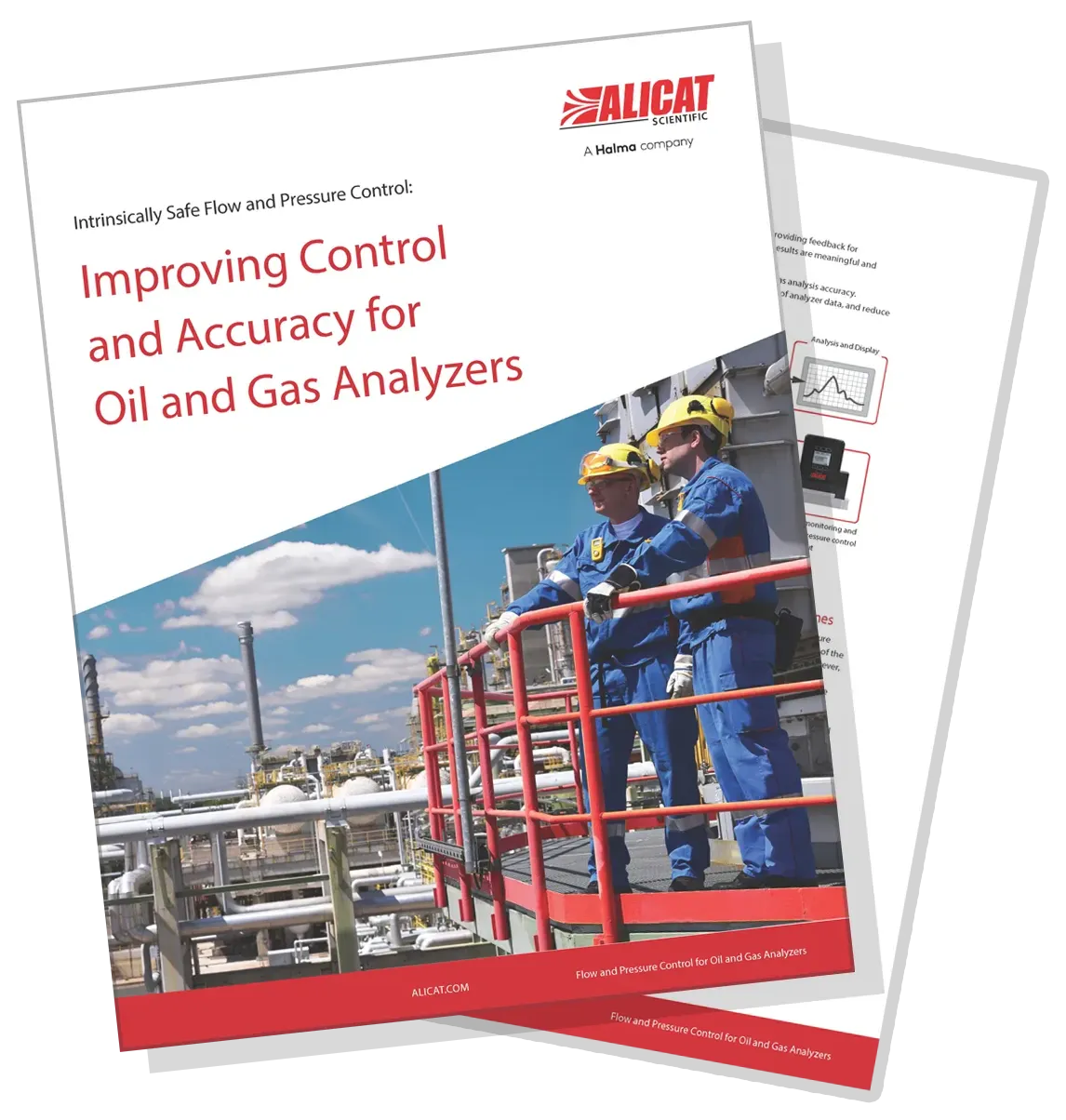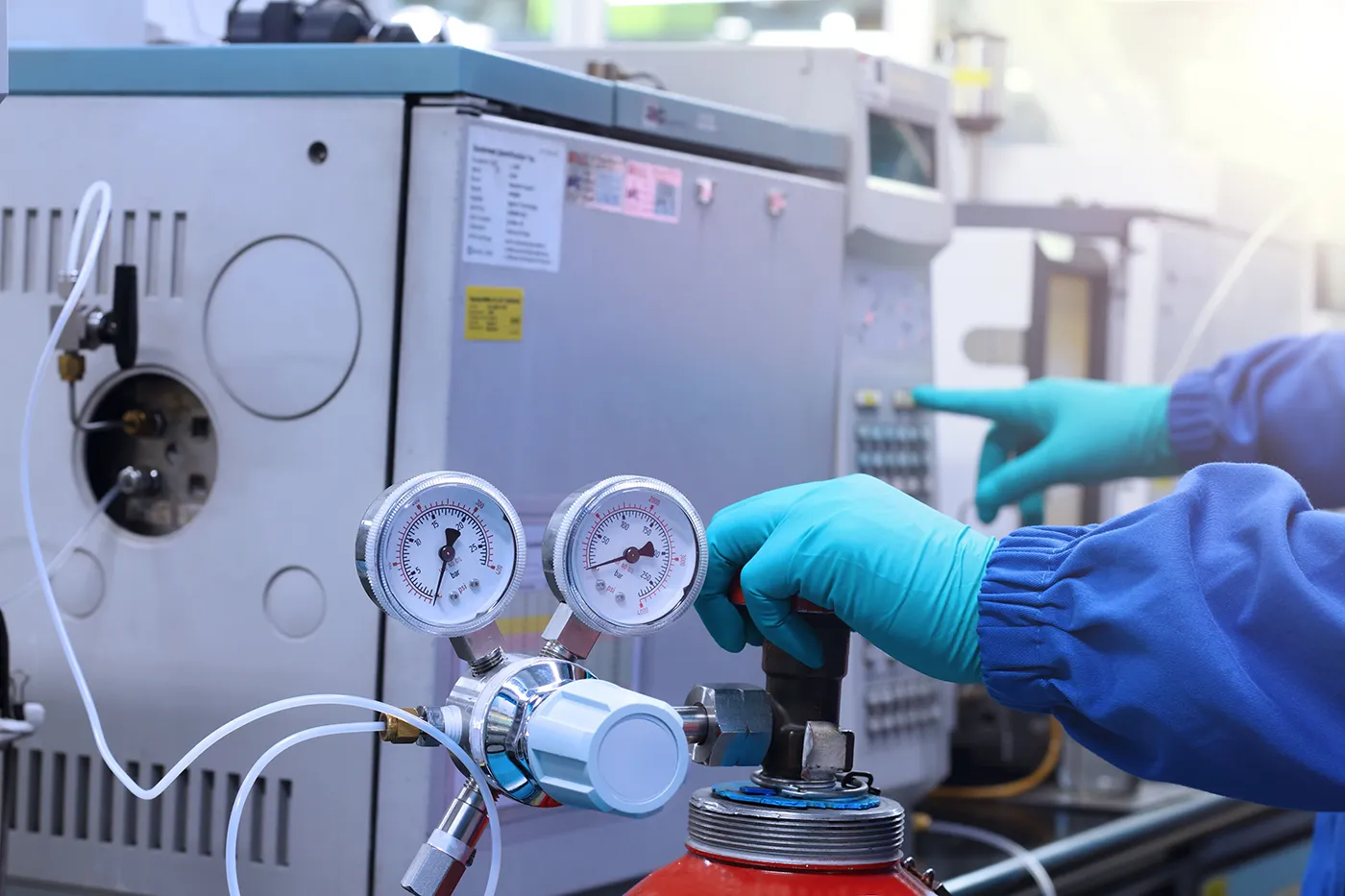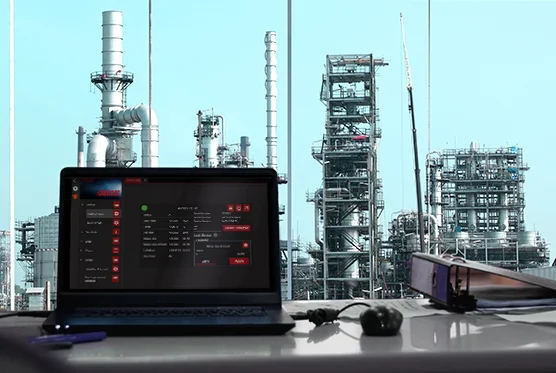Products » Intrinsically Safe
Everything You Need to Know About Intrinsically Safe Electronic Gas Flow and Pressure Instrumentation
Rugged, industrial grade proportional flow and pressure control for explosive atmospheres
Alicat Scientific is the first to offer measurement and control devices in one, certified for use in both Class I Division 1 and Class 1 Zone 0 hazardous locations.

Industrial automation sensor with multivariate data collection
- Digital MODBUS RTU and Alicat® ASCII, or analog 4–20 mA I/O
- Up to 13 reported parameters on flow, pressure, temperature, totalizer, and humidity
- Fewer components, by combining measurement and valve control into one
- 30 ms response time for proportional valve control
- Sampling rates 1000 times per second
- Display screen verification of operations and parameters
- IP66 and intrinsically safe saves on enclosure weight and purging needs
What does ‘intrinsically safe’ mean?
Protection concepts
Intrinsic safety is a protection concept or method of protection. Protection concepts are standardized strategies for ensuring the safety of equipment in places where there are flammable or explosive gases or dust present—that is, hazardous locations.
Classifying hazardous locations
Hazardous locations are categorized as class and division in North America, and as class and zone internationally. The classes indicate the type of hazard present, gas (Class I) or dust (Class II), and division or zone indicates how likely that type of hazard may be present in the area. Likely to be constantly present is rated division 1 in North America and rated Zone 0 internationally. At the other end of risk is not present under normal operating conditions, rated division 2 or zone 2.
Together, the class and division of Alicat’s IS‑Max™ and IS‑Pro™ intrinsically safe instruments meet North American Class I Division 1, and Class 1 Zone 0 for EU (ATEX) and globally (IECEx) safety requirements.
The certification tests
Devices that have received the intrinsically safe certification have been designed and tested to prevent conditions that might ignite an explosive atmosphere: no spark with enough energy to ignite, and low heat production.
They undergo extensive verification to meet the safety requirements, and may have extra precautions, such as protective encapsulated coatings of PCB boards, to prevent arcing to internal surfaces. Materials and construction are considered to minimize and eliminate sparks that might occur from events such as an impact by a metal object, or because of static electricity. To further guard against this, the energy into the devices is limited. Each device requires an electrical barrier device for providing power to it, at the boundary of the C1D1 (Class 1 Zone 0) area. The barrier fail‑safe circuitry to prevent surges.
The certification takes place through an independent testing and certifying body. Changes to the device design or capability that might affect the safety concerns would require recertification.
Not ‘explosion proof’
Intrinsically safe is one of seven protection concepts. It is different from explosion proof, in that intrinsically safe means the device won’t ignite an atmosphere, while explosion proof means that an ignition, should it occur, will be contained and/or redirected harmlessly. An intrinsically safe device doesn’t require an explosion proof (also flameproof) housing, so long as it is weather resistant. It doesn’t require purge gases in its enclosure, either. Other protection concepts are increased safety or non-sparking; oil immersion; powder filled; and encapsulation.

Intrinsically safe is highest level
Of all the seven protection concepts, only the intrinsic safety protection concept and encapsulation protection concepts can be certified to the highest equipment protection level. Only they are recognized as suitable for use in zone 0/division 1.

Why switch to an electronic flow and pressure controller in explosive atmospheres?
This white paper on use cases for oil and gas analyzers illustrates the reasons to switch. Older technologies to control pressure and flow in a Division 1, or Zone 0 area have limited control, accuracy and data collection. An intrinsically safe electronic mass flow meter or controller, or an intrinsically safe electronic pressure meter or controller provide:
- Protection from drifting measurements
- More insight into the process through a greater range of sensors and data
- Higher precision, more adaptable pressure and/or flow control
- Fewer components in the system
- Validated analysis results
Gas chromatography & analysis labs
GC users and manufacturers alike look to Alicat IS devices for backpressure regulation and precise delivery of carrier gases, resulting in near perfect gaussian peaks, less peak splitting, and dramatically clearer data.
Benefits of IS‑Max and IS‑Pro for gas chromatography
- Data logging for easier troubleshooting and diagnostics
- No manual adjustment due to operating conditions
- Digital communication allowing devices to be read (or controlled) from outside the hazardous zone

Hydrogen electrolysis and fuel cell testing
Future proof your test bench with the only mass flow controller certified for CID1 environments. Great for measuring oxygen & hydrogen flow from electrolyzers, IS Max streamlines complex testing and production setups by incorporating relative humidity compensation, multivariate reporting, an unmatched control stability into one device.
Benefits of IS‑Max and IS‑Pro for hydrogen
- Data-logging capability
- Ability to measure custom gas mixes accurately
- Dew point sensing to control condensation
- Scripting power to quickly change test parameters

Chemical analysis and environmental monitoring for oil & gas
Benefits of IS-Max and IS-Pro for analyzers & air monitoring
- IP66 case for outdoor longevity
- Scripting and remote control/data collection capabilities
- Reduced human intervention, faster verification of operation in the field
- Multivariate reporting means better information on operating conditions
- Valve usage data for improved preventive maintenance cycling
- Use an IS‑Max to control on pressure, while measuring flow: better verification and control!
- Low pressure drop flow meters for better, faster leak checking

Alicat’s family of intrinsically safe instruments

IS‑Max Mass Flow Controllers & Mass Flow Meters
IS-Max intrinsically safe flow controllers and meters have North American CID1, IECEx and ATEX Zone 0 certificates. These instruments can measure and control flow of gases in continuously explosive gas atmosphere hazardous locations.

IS‑Pro Pressure Controllers and Pressure Meters
IS-Pro intrinsically safe pressure gauges and pressure controllers have North American CID1, IECEx and ATEX Zone 0 certificates. They provide high performance pressure measurement, with proportional control, for flowing and deadended processes in continuously explosive gas atmosphere hazardous locations.
Why choose Alicat IS-Max mass flow controller for your gas flow?
Ask an engineer
Your flow rate, pressure, and choice of gas can all affect which Alicat instruments work for your application.
Our Applications Engineers can answer your questions and help you find the best option.
Call Us
+1 (888) 290-6060
Live Chat
Ask us a question
Help Near You
Find a local representative
Self Help
Technical documentation